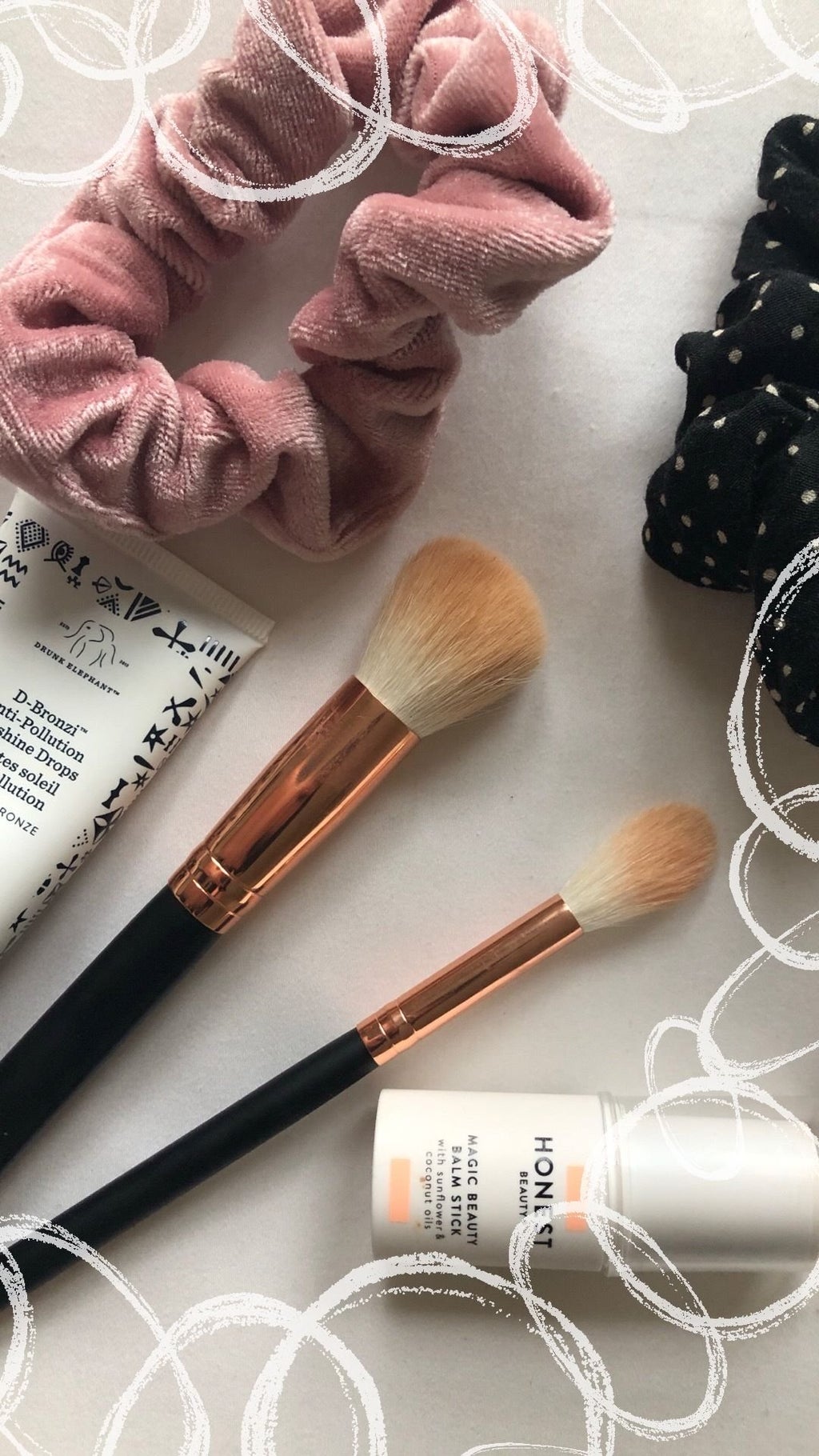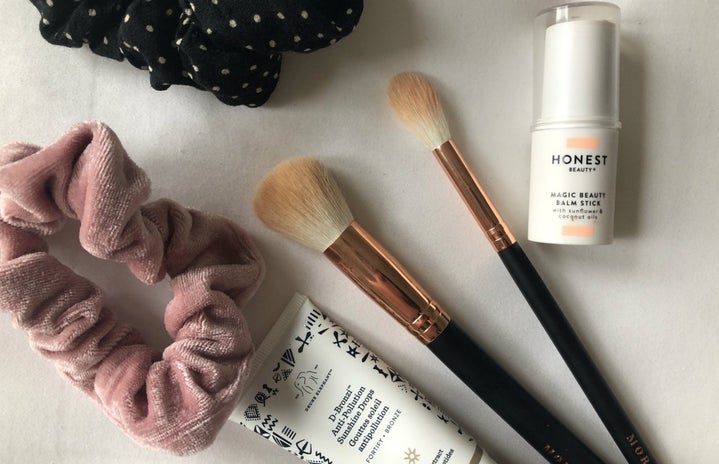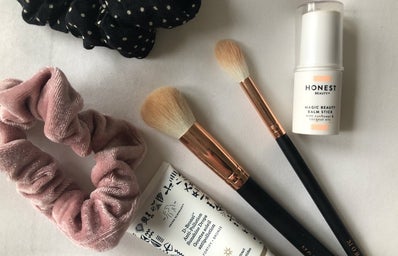It’s time to face the dreaded, age-old question: when is the last time you washed your makeup brushes? Be honest with yourself when you answer this, because it’s probably been longer than you want to admit. Especially if you’re the kind of person who doesn’t wear makeup every day, you can slip into complacency when it comes to the state of your brushes (“Oh, it hasn’t been that long, I haven’t used them that much…”). Sometimes the truth hurts, though, and the reality is that your brushes are probably a lot grosser than they appear, even if they’re not caked with foundation.
Don’t believe me? Here’s an ugly fact for you: makeup brushes acquire bacteria pretty much as soon as you start using them, and that bacteria can come from (and add to) oil and dirt on your skin, as well as your makeup products. And even if we don’t see those germs, they’re growing — Byrdie editors tested their brushes for bacteria and found small colonies growing on them, even though they’d been washed in the last couple of weeks. Gross, right? Just like you wouldn’t go weeks or months using the same unwashed towel after a shower, you shouldn’t be reaching for the same brush again and again without giving it a good cleansing regularly!
But just how regular should those intervals be? Great question. Here’s the lowdown on getting your favorite brushes back to the super-soft condition you bought them in.

How often should I refresh them?
In an ideal world, you should clean your brushes after every single use. Honestly, though, who has the time?
I certainly don’t, which is why I’m much more partial to the advice given by Elle, which is to clean them every week, and wash them once a month (there’s a difference – who knew?). Depending on how many brushes you have (and how gross they are), it shouldn’t take you too long to actually wash them, as waiting for them to dry is the most time-consuming part, so think about setting some time aside in your schedule to just get it out of the way.
Related: Um, Your Pillowcase Might Be Affecting Your Skin — Here’s How to Make Sure It Isn’t
What’s the best way to clean them?
Alright, it’s time to get down and dirty. This is when it comes back to the question of “cleaning” versus “washing” or “wet-washing,” as Health puts it. Cleaning is a lot quicker and simpler: you can buy a brush cleanser spray like NYX’s On the Spot ($10) or Sephora’s Dry Clean ($14). All you have to do is either spritz your brushes and then use a paper towel or tissue to get rid of the surface residue, or spray the cleaner directly onto a paper towel and then sweep the brush through it until the makeup on it is gone. Easy.
Washing, on the other hand, is a bit more involved—you’ll need to roll up your sleeves and get ready to scrub. You will need a gentle shampoo or liquid soap that will eliminate gunk without destroying the brush’s bristles. The gentlest way to clean them is to swirl and sweep the brushes in the palm of your hand with the soap until they’re clean, but if you want to make sure you’re getting everything off, a textured palette or mat like this one from Real Techniques will be your new best friend. The idea is that the textured surface will get between the bristles more thoroughly and make sure they’re truly clean.
Once you’ve cleaned the brushes, you can run them under water again to straighten out the bristles if they’ve been bent at all during the washing process, and then guide them back into their original shape with your hands so that they dry correctly.
Speaking of drying, there’s one important tip you need to be aware of: don’t dry them with the bristles up! If water slips down beneath the bristles into the handle of your brush, you’ll be damaging them in the long run since this will eventually loosen the glue that keeps the bristles intact. If your brushes are sopping wet when you’re ready to dry them, you can pat them with a paper towel to soak up excess water before laying them out. You can buy a brush drying rack like this one from Sonia Kashuk ($15 at Target) if you’re feeling fancy, or simply lay them flat on a towel with the head sticking out from the edge of your table or counter. This allows the brush to have air on all sides, so the entire brush is drying at the same rate (and so the bristles on the bottom won’t flatten and ruin the shape).
Is there a faster way?
If washing and drying makeup brushes was a fast affair, you’d probably be a lot less likely to put it off. Stylpro understands that mentality, apparently, because they’ve created the Stylpro Makeup Brush Cleaner and Dryer ($35 on Amazon), which sounds like the machine of my lazy, makeup-obsessed dreams.
Stylpro claims that your brushes will be clean and dry within 30 seconds, which means you should be able to use them immediately instead of waiting hours for them to dry. You choose the right “collar” for your brush, add some liquid cleanser to the bowl, and then turn on the device, which will spin your brush in the soap and get all the makeup and dirt off. Once it’s clean, you simply keep spinning it out of the liquid, and it will dry in seconds. Check out this demo by YouTuber Paula Holmes to see for yourself!
What’s the cheapest way?
If you’re reading about these spray cleansers and machines and your first thought is some variation of that “I have $3” meme, I get it. Spending more money than you already do on beauty products — and not even the fun, sexy ones, like eyeshadows or lip products — is probably not that appealing. Plus, sometimes the best things in life are cheap. That’s why this technique is my personal favorite, since it uses a product you already have in your kitchen: dish soap!
Not all dish soap is created equal, though — Elle specifically recommends Dawn, which is literally used to clean baby ducks affected by oil spills which A. is adorable and B. means it will be both gentle and effective on your brushes. You don’t need a lot—you don’t want to overwash your brushes, which could make them coarser and less able to smoothly apply your makeup—so only add a few drops to some warm water.
Related: My Fave Affordable Skincare Brands for When You’re Broke, But Still Want to Buy Serums
When should I just throw them out?
As much as I wish makeup brushes were everlasting and that none of us would ever have to shell out money for new ones, that’s just not the case. Taking proper care of your brushes with the techniques above will do wonders for the longevity of your tools, but sometimes you have to face the inevitability that it’s time to replace them.
There’s not really a certain length of time after which you should be tossing your old brushes, but definitely pay attention to some key signs: if you notice your brush isn’t going back to its original shape, if the bristles start coming out, or if it has a strange smell (aside from the normal makeup smell, of course), you’ll want to get rid of it. If it’s not applying or blending as well as it used to, either, that’s definitely a red flag—after all, what else are brushes for?
Washing your makeup brushes doesn’t have to be too hard or too expensive, even if it’s often not the most fun item on your to-do list. If you need some motivation, though, just remember the feeling of brushing those super-soft, brand-new bristles on your face back in the day when you first bought your brushes. You can get that feeling back — it just takes a little extra care!


